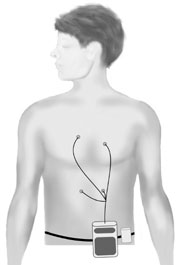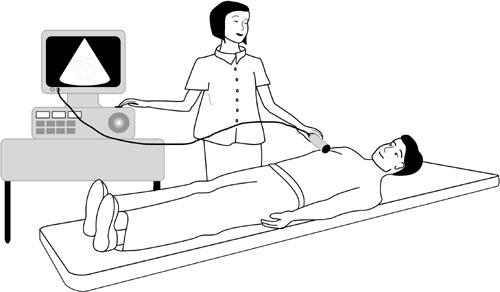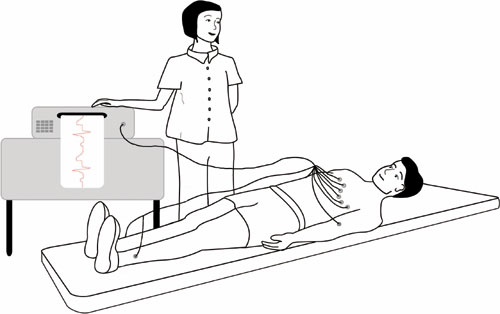Cardiac Magnetic Resonance CMR scan *
A CMR scan is a special kind of scan used to examine the structure of the heart and the nature of its muscle. It uses a Magnetic Resonance scanner that creates intense fluctuating magnetic fields around your body while you are inside the scanner. How a CMR scan works This generates the signals that make […]
Provocation tests (Ajmaline, flecainide and adenosine tests)
You may be asked to have provocation tests if your doctor suspects Brugada Syndrome. While you are having an ECG test you will be given an injection of ajmaline or flecainide (antiarrhythmic drugs). The test may show changes on the ECG that are typical of one of the channelopathies. A fine plastic tube is inserted […]
Reveal device
When it is difficult to assess or record a symptom because it only happens infrequently – as with blackouts – a Reveal device can be used. The device, which is the size of a packet of chewing gum, is placed under the skin at the left shoulder. Fitting a reveal device You will need to […]
Cardiomemo and event recorder *
Cardiomemo and event recorders are more sophisticated versions of the basic Holter monitor. Whenever you have an attack of symptoms, you can activate the device to record your heart’s rhythm. (You can also do this with the digital Holter.) The advantage of the cardiomemo is that it doesn’t have any leads, so you can just […]
Holter Monitor*

The Holter is a recording device that comes in two different forms: a small portable tape recorder (like a walkman), or a small digital device the shape of a pager. You wear the device on a belt round your waist. Four or six ECG leads from the device are taped to your chest. The device […]
Cardiopulmonary exercise test
Some hospitals may also ask you to do a cardiopulmonary exercise test. This test analyses the efficiency of the heart muscle by measuring the amounts of oxygen your body uses during exercise. You will be asked to breathe into special equipment while you are exercising (like the exercise test). If the efficiency of your heart […]
Exercise test *
(Also called an Exercise ECG.)This test is the same as the ECG but is recorded before, during and after a period of time spent exercising on a treadmill or an exercise bike. This allows the doctor to examine any changes in the electrical patterns that occur with exercise, and analyse any abnormalities. This test is […]
Echocardiogram (Echo) *

This test uses ultrasound waves to look at the structure of the heart. It is useful for people whose ECG shows changes that could be caused either by a channelopathy or by uninherited heart disease that has damaged the heart – for example, a previous heart attack that you may not have even been aware […]
ECG (electrocardiogram) *

The ECG is the most basic cardiac test. The ECG involves taping electrical leads onto your legs, arms and chest to take readings of the electrical activity of your heart. These are printed out onto a piece of paper for the doctor to examine. If the first ECG does not show any sign of a […]
Medical examination
A medical examination may help to discover if there is an inheritable structural heart disease in the family. For example, if there is mitral valve prolapse with leakage from the valve this will cause a ‘murmur’ that a doctor can hear through a stethoscope. Your doctor may suggest that you have some of the tests […]



